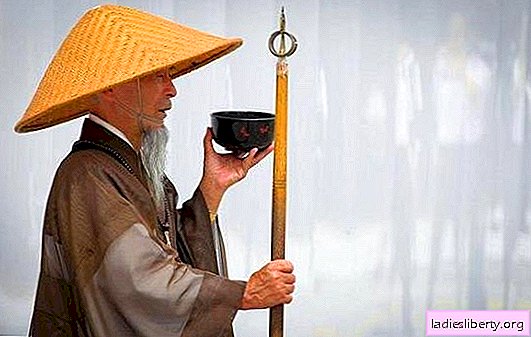
The Land of the Rising Sun was, is and remains a "distant light" for a Westerner. Many Europeans are shocked by the rites, superstitions, and customs that almost the entire population of the country follows. Some of these ancient traditions do seem strange, while others even scare people.
Shinto
Most Japanese superstitions came from the traditional Shinto religion, which appeared on the territory of Japan in ancient times. Its essence lies in worshiping the kami gods living in natural and abstract objects. It is believed that religion came from the sun goddess Amaterasu, who gave birth to all living things on Earth.
The Japanese are 85% Shinto, so the first thing a person sees when they come to Japan is the presence of a huge number of temples and shops with amulets and sacred tablets.
It is believed that a gift to the gods in the form of money or divine paraphernalia will bring people happiness and prosperity. The Japanese do not forget their traditions, so they often go to temples to give gifts to the deities. In return, the gods guarantee the population of Japan stability and prosperity.
In addition to a large number of sacred buildings and temples, on the streets of Japan you can almost everywhere see figures and figurines of mythical creatures. For example, famous throughout the country raccoon "tanuki" It is located opposite bars and cafes, bringing profit and popularity to establishments. The same role is played by cat "maneki neko"luring customers to shops and restaurants.
Everything that is visible to a European person on the streets of Japan is far from the limit of the Japanese fantasy and religiosity. As the country's history developed, other signs associated with higher powers began to appear.
Feast of Girls and Feast of Boys
A vivid manifestation of this phenomenon was the small hinaningyo dolls, which it is customary to pull out for girls' celebrations (March 3). All procedures for the preparation of statuettes are carried out in advance, a few days before the celebration. However, after the third day, you should immediately hide the symbol, otherwise the future girl will not be able to get married.
Much simpler is the case with the holiday of boys. The celebration is held on May 5. On this day, every family in which there is a son or grandson hangs near the door "koinobori" - a kind of garland of carps. It is believed that she brings happiness and strength to the future man.
Dangerous deities
Not all deities and higher powers in Japan are considered good. Many of these monsters have become heroes of popular superstitions that can scare a newcomer. For example, dangerous for children water kappa", luring young children who are unattended by their parents into their lair. The Japanese are seriously convinced that the" kappa "eats children if they see them alone near the water.
In addition to the "mouth guard", you should beware and god of thunder "Raidzin". Every night, the deity goes around all the houses of Japan in search of children's bellies. If during sleep the children do not hide their bellies, then the Raidzin eats their navel.
In Japan, superstition is prevalent not only at the country level, but also at the school level. The most famous is considered the legend of the bloody girl Hanako, which lives on the third floor in the third booth of the female toilet of any school in Japan. You can call it with three knocks on the cabin door. With a positive answer to the call, in no case can you open the door, otherwise it will be trouble. In different prefectures of the country, the legend is interpreted differently: somewhere a lizard crawls out and devours schoolchildren, and somewhere Hanako sticks his bloody hand out of the booth.
Photos, numbers and death
Despite the fact that Japan is called a progressive and highly developed country, many of the signs and legends of the country excite the imagination and perplex.
A good example is the superstition of the quick death of a person in the middle of a photograph. It originated from the beginning of the invention of the first cameras, when the old technique could not focus on all objects of the image, and the center of the image was blurred. Since those times in the middle of the photo used to put a doll. Later, the Japanese abandoned the doll and began to place an elderly person in the center, whose life was short.
As many researchers have observed, Japan's superstition is very much related to death. The Japanese are trying their best to avoid any signs that could lead to death or other misfortunes. So the number "4" is never used to number floors, apartments or wards in a hospital. The fact is that one of the readings of the hieroglyph "4" means death. For the same reason, it is rarely seen even in speech.
A similar "reputation" has the number "9". Her second reading can be translated as "misfortune", "loneliness", "trouble". Quite rarely, but some houses and institutions also do not use the nine in the numbering of floors and apartments.
In Japan, you need to carefully consider the choice of flowers, especially if it comes to a gift for a sick person. No need to choose potted plants. They have roots, which symbolizes the further progression of the human disease.
"The Land of the Rising Sun" from the very beginning of the emergence of statehood began to form a special philosophy based on Shinto. All phenomena associated with disease or death, since ancient times, are considered "unclean." Such a term originated in the bowels of the Shinto religion, where all actions had their own "connotation."
To cleanse a person should use salt and salt water.
If a collision with a funeral is inevitable, you should hide your thumb in a fist.
This is due to the writing of the character, one of the components of which is the character "parents". Thus, a person protects loved ones from death and misfortune.
It is still impossible to accurately say how many such signs exist in the "Land of the Rising Sun". However, one fact remains unchanged: legends and superstitions will always be of great importance in the life of the Japanese. They dominate in all spheres of society and influence the preservation of the indigenous traditions of the country. Many Japanese people grew up on these beliefs and continue to pass them on to future generations.











